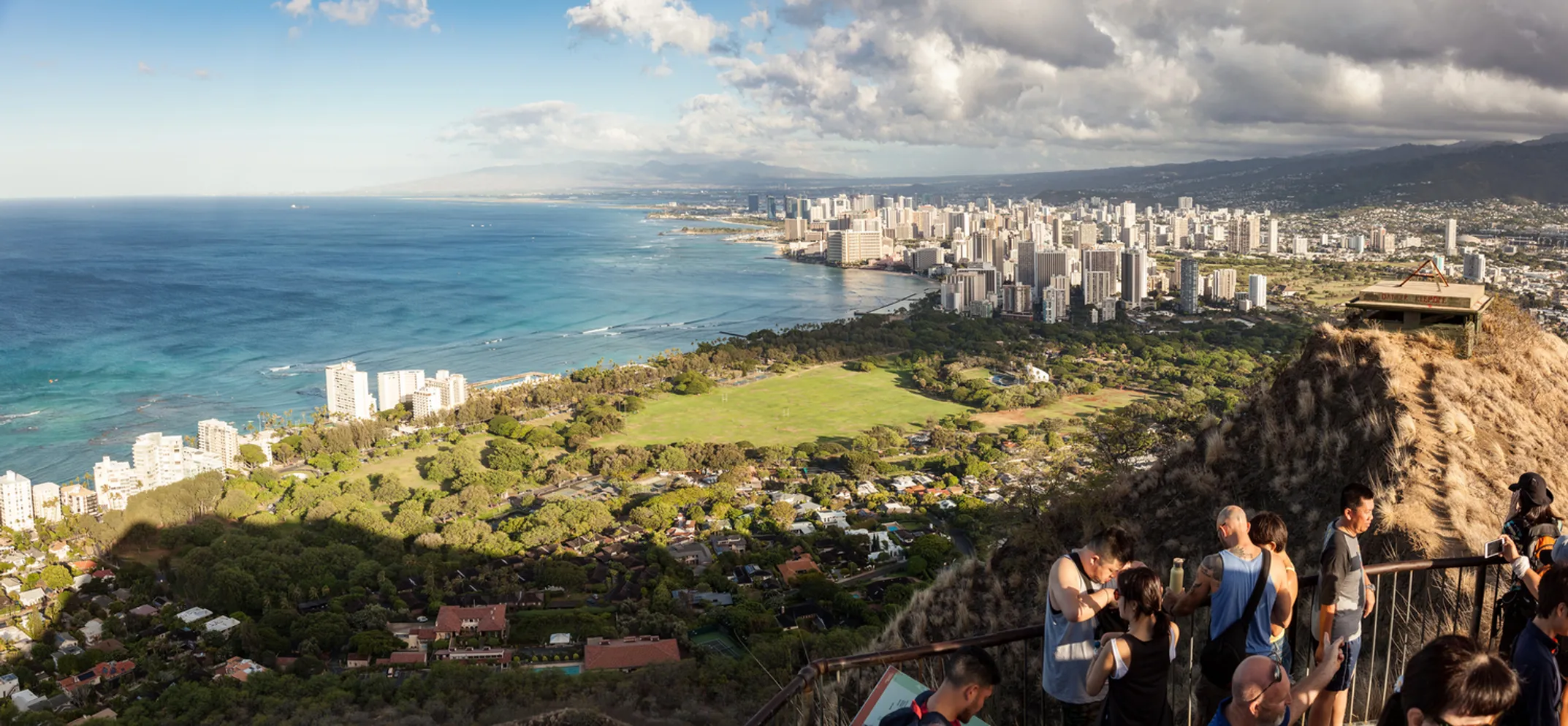

Beach Safety Guide
Heeding the Ocean's Mana - Essential Safety in Hawaiian Waters
Never Turn Your Back on the Ocean
Here in Hawaiʻi, we have a saying that is more than just a warning. It's a philosophy: "Never turn your back on the ocean." It's the first lesson every local child learns. It's about respect. The ocean here is not the gentle, predictable water you might find elsewhere. It is wild, powerful, and demands your full attention. Understanding its moods and rhythms is the most important piece of local knowledge, or ʻike, you can possess.
Critical Reality Check
Drowning is a leading cause of visitor death in Hawaiʻi, a tragic reality that stems from underestimating our waters. Before you even touch the sand, let this be your guide. It's the key to enjoying our beaches safely and showing your respect for their immense power.

Enjoying the ocean's beauty safely from elevated viewpoints - sometimes the best view is from above
Understanding Seasonal Swells: The Ocean's Two Faces
Our islands have a split personality dictated by the seasons. This is the single most important factor in planning your beach days.
❄️ Winter (October - April)
The North Pacific awakens, sending massive swells to our shores. The North Shores of all islands become arenas for the world's best surfers, with waves reaching heights of 30 feet or more.
North Shores: Extremely dangerous for swimming - watching only
South Shores: Generally calmer and more protected
☀️ Summer (May - September)
The script flips. The North Shore becomes as calm as a lake, offering some of the best snorkeling and swimming conditions of the year. Meanwhile, South Shores can receive large swells from Southern Hemisphere storms.
North Shores: Calm and perfect for families
South Shores: Possible large swells - check conditions
Decoding the Dangers: Ocean Hazards You Must Know
Beyond the seasons, specific hazards define our coastline. Knowing them can save your life.
Dangerous Shorebreak
This is when a wave doesn't gradually roll in but instead breaks with immense force directly on the sand or in very shallow water. Even a small-looking wave can pick you up and slam you into the sand, causing serious neck and spinal injuries.
Notorious Shorebreak Beaches:
- • Mākena "Big Beach" on Maui
- • Sandy Beach on Oʻahu
- • Hāpuna Beach on the Big Island
Safety Tip: Always observe the water for at least 15 minutes before entering. Waves come in sets, and a long lull can be deceptive.
Rip Currents
These are powerful, narrow channels of water flowing away from the shore. You can sometimes spot them as a choppy or turbulent channel of water between areas where waves are breaking cleanly.
If Caught in a Rip Current:
- 1. Do NOT panic and do NOT swim against it
- 2. Swim parallel to the shore until you're out of the current's pull
- 3. Then swim back to land at an angle
- 4. If you can't escape, float or tread water and wave for help
Marine Life Encounters
Our waters are teeming with life, and some of it requires caution and respect.
Box Jellyfish
These nearly invisible creatures swarm to leeward and south shores 9 to 10 days after a full moon. Their sting is intensely painful. Heed all posted warning signs.
Treatment: Remove tentacles carefully, rinse with vinegar or hot water. Seek medical attention for severe reactions.
Portuguese Man-o-War
These blue, balloon-like creatures are pushed ashore by strong onshore winds. Their long tentacles deliver a painful sting.
Treatment: Rinse with fresh or salt water and apply ice for pain relief.
Sharks
While shark encounters are rare, they do happen. Never swim alone at dawn or dusk, or in murky water. If a shark is sighted, lifeguards will post warnings.
Safety: Exit the water immediately and calmly if you see one or if a warning is issued.
Essential Safety Guidelines
Best Practices
- Always swim at lifeguarded beaches when possible
- Check with lifeguards before entering water
- Never swim alone
- Trust your instincts - when in doubt, don't go out
Resources
- Hawaii Beach Safety website for real-time conditions
- Local weather and surf reports
- Lifeguard towers and warning flags
- Emergency: Call 911
🚨 Emergency
For all ocean emergencies and rescues
⚠️ Warning Signs
- High surf warnings posted
- Red flags flying
- Murky or brown water
- Box jellyfish warnings

